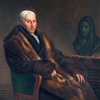De representatieve fictie. Politieke vertegenwoordiging tussen oude orde en moderniteit
DOI:
https://doi.org/10.18352/bmgn-lchr.6252Keywords:
ParliamentsAbstract
The representative fiction. Political representation between old order and modernity
In this article some connections are explored in Dutch thinking on political representation between the old order of the Dutch Republic and post-revolutionary modernity. Gijsbert Karel van Hogendorp, the framer of the Dutch constitution of 1814, has been dubbed — with almost equal justification — an enlightened conservative and the Netherlands’ first liberal. He tried to come to terms with the innovations of the revolution, whilst at the same time attempting to preserve much of the Old Constitution (even if only in name). This required some inspired constitutional juggling.
Hogendorp’s formulation of the representative principle in 1814 is presented as a conscious attempt to connect the ‘representative fiction’ of the Old Constitution of the Republic, as it had been conceptualised since the Dutch Revolt, with the concept of representation laid down in the various Batavian constitutions (and constitutional projects) since 1795. In more general terms it is suggested that the professed antimodernity of much Restoration thinking was intimately linked to revolutionary modernity and in itself hardly less modern. Thus many anti-modernists of the Restoration were paradoxically exemplifying both the great breach and the underlying continuities of the revolutionary era.
This article is part of the special issue 'Parlementen in de Nederlanden'.
Downloads

Downloads
Published
Issue
Section
License
Authors who publish with this journal agree to the following terms:
a) Authors retain copyright and grant the journal right of first publication with the work simultaneously licensed under a Creative Commons Attribution 4.0 International (CC BY 4.0) that allows others to share the work with an acknowledgement of the work's authorship and initial publication in this journal.
b) Authors are able to enter into separate, additional contractual arrangements for the non-exclusive distribution of the journal's published version of the work (e.g., post it to an institutional repository or publish it in a book), with an acknowledgement of its initial publication in this journal.
c) Authors are permitted to post their work online (e.g., in institutional repositories or on their website) prior to and during the submission process.
Authors are explicitly encouraged to deposit their published article in their institutional repository.







